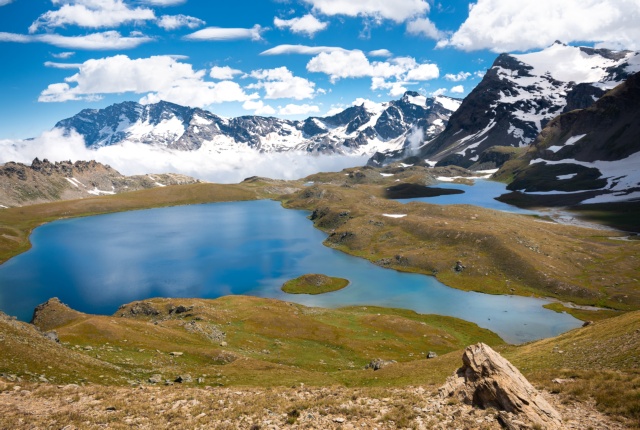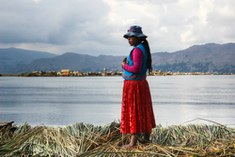Climate Change and Water Reserves: A Global Map

Droughts, floods and other extremely frequent extreme weather phenomena are altering the amount of available freshwater both locally and globally. But is it possible to keep track of these changes and measure how much water is "lost" or "gained" as a result of climate change-related events?
The answer comes from the new GRAiCE dataset which, thanks to advanced machine learning models, enables the reconstruction of water storage evolution on a global level between 1984 and 2021. GRAiCE, introduced in the journal Scientific Data, stems from the work of two researchers at the University of Bologna, Irene Palazzoli, research fellow at the Department of Civil, Chemical, Environmental, and Materials Engineering, and Serena Ceola, professor at the same department, in collaboration with Pierre Gentine, Professor at Columbia University in the City of New York.
“This innovative dataset provides a new perspective on changes in freshwater availability by accurately reproducing the impacts of extreme weather phenomena”, says Irene Palazzoli. “This way, GRAiCE contributes to global efforts to understand and address the challenges climate change poses to water systems”.
Terrestrial water storage can be defined as the summation of all water on the land surface and in the subsurface. Monitoring variations is essential to assess the impact of climate change and human activities on the amount of water available.
Thanks to two satellite missions—GRACE, launched in 2002, and GRACE-FO, operational since 2018—today we have a series of detailed global estimates of terrestrial water storage. However, we still lack equally accurate measurements prior to 2002, and even after GRACE was launched there are still periods when satellite data are missing due to technical problems.
In order to create a more extensive and complete dataset, researchers have developed advanced machine learning models, training them with observations of the GRACE and GRACE-FO missions and integrating them with data on the main climatic variables that affect the hydrological cycle and vegetation.
“Thanks to the use of neural networks, we have been able to capture the complex interactions between climate, vegetation and water resources, obtaining an accurate reconstruction of the anomalies in terrestrial water storage”, says Irene Palazzoli. “The variations estimated by our models enable us to analyse in detail the evolution of water systems in response to climate factors over the years”.
The GRAiCE dataset not only accurately reconstructs changes in global freshwater storage and in individual river basins but also helps identify the impact of extreme weather events, such as the El Niño and La Niña phases, on water resources.
“During El Niño years, the dataset clearly reveals the typical hydrological dynamics associated with this phenomenon, such as water increases driven by higher rainfall in the tropical Pacific and severe droughts caused by reduced rainfall in tropical continental regions”, says Irene Palazzoli. “Similarly, GRAiCE is capable of effectively capturing the hydrological impacts of La Niña phases, such as the substantial rise in water reserves observed in eastern Australia during the 2010-2011 La Niña event”.
Understanding the impact of extreme weather events on water reserves is essential to help communities prepare for water scarcity or floods before they occur. By tracking long-term trends in the global water cycle and revealing how water resources respond to climate variability in recent decades, GRAiCE provides crucial information to improve water resource management in a changing global context.






